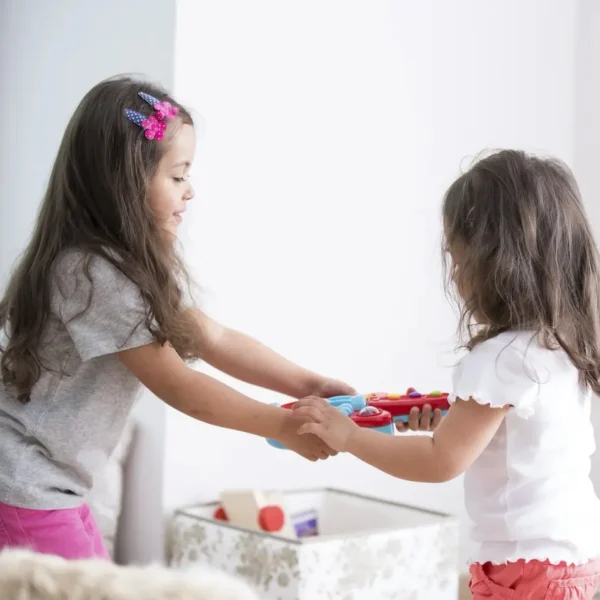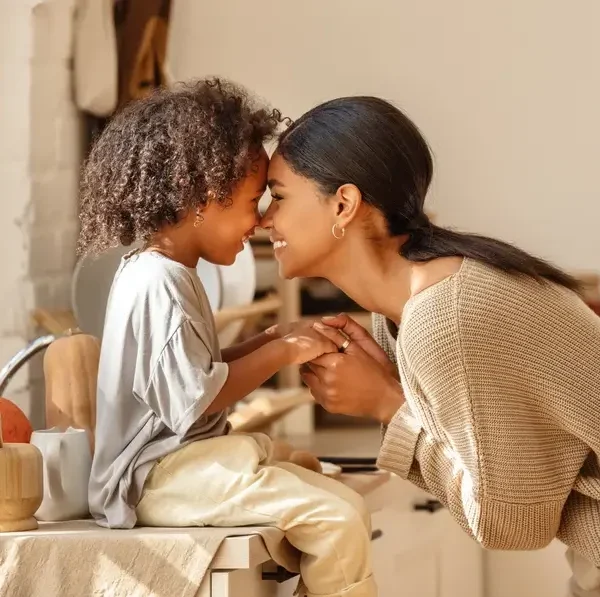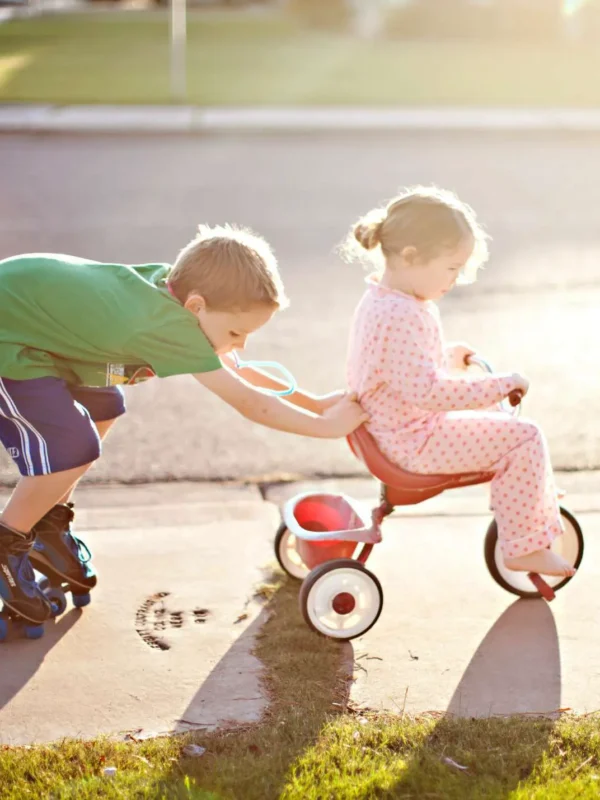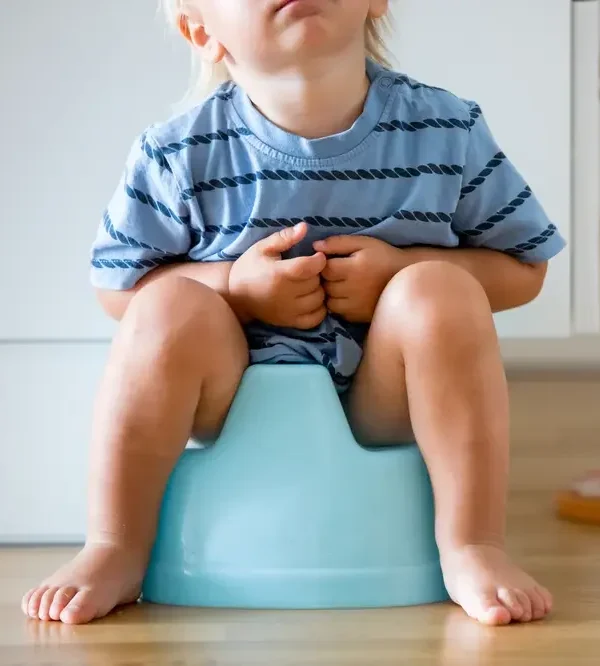
The sibling dynamic is one of the most fascinating and often misunderstood relationships. It’s not static. It’s not simple. And it’s certainly not one-size-fits-all.
In fact, it’s a constantly evolving matrix of gender, personality, birth order, developmental stages, emotional needs, power struggles, misunderstandings, and a whole lot of feelings.
Add to that our own projections as parents, our assumptions, our judgments, our personal baggage… and it’s no wonder we often misinterpret what’s going on between our children.
I want to take you through 5 core principles you can apply to just about every sibling fight, regardless of what it’s about or how old your kids are.
These principles don’t just apply to sibling relationships, by the way. They’re relevant to all of your parenting. They help you become the kind of parent who guides, not just reacts. Who mentors, not just manages. Who builds long-term connection instead of enforcing limited, short-term fixes.
1. Don’t Take Sides
When siblings fight, it’s easy for parents to feel instantly pulled into the drama. The shouting, the accusations, the tears… it’s like you’re being dropped into a mini courtroom and expected to deliver justice immediately.
And so we do what we think we should: rush to separate, assign blame, quickly decide who’s at fault, and try to fix the fight as quickly as possible.
But what if there’s a better way?
What if, instead of just policing your children’s relationship, you mentor it.
Even when it feels obvious who started the fight. Even if one child is older, stronger, or louder… resist the urge to take sides. Resist the urge to declare a “bad guy” and a “victim.” Because here’s what happens when you take sides:
- You unintentionally compromise your relationship with one of your children.
- You increase rivalry and resentment between siblings.
Instead, see their conflict as an opportunity to support both (or all) kids equally, without deciding who’s right or wrong.
Instead of: “How many times have I told you?” or, “You’re older, you should know better.”
Try:“Looks like something happened between you two. Let’s figure this out together.”
“I’m here to help both of you. Who wants to tell me what happened first?”
This doesn’t mean that you don’t discipline or that anything goes. It means you’re there for all your children equally. Pausing your judgment allows both children to feel safe enough to share their side and take ownership of their actions. Because your job isn’t to decide who’s “good” or “bad”, “right” or “wrong, it’s to guide them both toward growth and communication.
2. Let Them Struggle (Safely)
When we see our children struggling – with frustration, disappointment, feeling left out, or upset – just about every part of us wants to swoop in and fix it. Of course! We want to protect them.
But here’s the truth: If we rush to remove every struggle, we rob our children of the chance to grow.
Let me be clear: I’m not talking about leaving your children to suffer or ignoring real distress. I’m talking about age-appropriate, everyday struggles that are safe, healthy, and essential for emotional growth.
- Tolerating discomfort
- Waiting their turn or having to share (even, having to share you!)
- Managing disappointment
- Feeling left out or that things are unfair
- Finding their voice
- Resolving disagreements
These are the small, everyday moments that build resilience, frustration tolerance, emotional regulation, problem solving skills, and independence.
And for many kids, those moments happen so often with… you guessed it, their siblings.
The next time your kids are fighting over who gets to sit next to you, who gets to use the toy first, who got the bigger slice… instead of rushing to make all things fair (which is not possible), shift your focus to allowing your children to experience some safe discomfort and learning how to manage through.
“I see this is really hard. What would you like to do about it? What can you tell her?”
“You’re upset. That makes sense, it’s hard to wait.”
You’re not abandoning your child, you’re coaching resilience. Remind yourself that struggle isn’t the enemy, it’s a training ground.
3. They Must Help Solve the Problem
Your children get into a fight and within seconds, they come running to you, frustrated, tearful, yelling accusations. And like most parents, you probably try to fix the situation, calm everyone down, and come up with a plan for what to do next.
Here’s what I want you to know: If your kids are capable of fighting about something, they’re capable of helping solve that fight too.
Yes, they need our guidance and support. But guiding is not the same as solving.
Instead of immediately stepping in with a list of solutions (which often ends in more friction), invite them into the problem-solving process.
- “What do you think we could do next time this happens?”
- “What can work for both of you? Any ideas?”
- “What do you want to say to each other?”
- “Let’s take a moment. Then we can come up with a plan together.”
When children co-create solutions, they feel ownership over them. That means:
- Less resistance to the outcome
- More willingness to compromise
- A deeper understanding of how to resolve future conflicts
- Practice problem-solving, communicating, and creative thinking
I know it might seem faster and easier to fix things for your children, but when you invite them into the process, you empower them to develop skills, emotional ownership, and a sense of agency. You help them become thinkers, not blamers. Creators, not complainers. You’re building a family culture that values reflection, growth, and working things out together.
4. It’s Not a Crisis
Children express themselves intensely and sibling fights feel like an emergency: loud voices, flying tears, maybe even a shove or grab.
It’s no surprise our stress response kicks in. We feel the urgency. We feel the chaos. And without even realizing it, we often mirror it.
We react emotionally, rush, raise our voice. We try to fix the moment quickly because it feels like a crisis.
But let me offer you this powerful reframe: It’s not a true crisis.
The sense of urgency our children create is emotional, not actual. And when we respond with our own panic or overreaction, it only amplifies that false sense urgency.
The very best thing you can offer in these high-stress sibling moments is the thing they can’t yet access for themselves: A grounded, steady presence.
Try telling yourself:
“Yes, this feels intense, but it’s not dangerous.”
“They are learning through this fight.”
“I can be the steady presence they need.”
This doesn’t mean you never intervene – you do. But you do so without panic or alarm.
Your calmness is not passive, it’s powerful. It models regulation and invites your child’s nervous system to settle. When you stay grounded, your kids can start to ground themselves too.
5. Don’t Add Your Own Emotion
Let’s be honest – this is one of the hardest parts of parenting. And I want to say upfront: every parent struggles with this, including me. There’s not a single family I’ve worked with where this hasn’t come up, again and again.
When your kids are in a conflict, it’s intense. It’s overstimulating and it’s often deeply triggering. In addition, sibling fights don’t happen in a vacuum. They happen when you’re tired, cooking dinner, answering emails, or just done with the day.
And yet… if you add your frustration, your guilt, your anger, or your fear and anxiety on top of your kids’ big feelings, the whole moment gets harder. Adding your own emotions into an already emotional moment only escalates the chaos. It pulls you out of your role as a mentor and guide and drops you straight into the storm as a participant, not a leader.
That’s why one of the most important things you can do is learn to regulate yourself. But you need a plan, not just good intentions.
A couple ideas:
- Breathe before you speak. Even one deep breath makes space between emotion and reaction.
- Use a mantra: “This isn’t about me.” “I am the guide.”
- Step away briefly if safe to do so
- Sing, hum, or move. Even a small release of energy helps regulate your nervous system.
- Keep your voice calm, even when your thoughts aren’t
- Ask for help: From a partner, from your kids (“I need a second”), or from yourself in the form of grace
✨ You can find practical tools for staying calm in my free Parenting Toolbox download
Understanding your own emotional patterns gives you power. It helps you prepare for moments you know will be hard. This work is hard and ongoing. And there will certainly be days when you lose it. That’s okay.
You’re never aiming for perfection and your children don’t need you to always get it right. You’re aiming for progress – slow, steady, meaningful growth.
Pulling It All Together
These five principles are the foundation of healthy sibling dynamics and a more grounded, connected parenting approach:
1. Don’t Take Sides. Support children equally. Step out of the judge role and into the role of steady guide.
2. Let Them Struggle. Allow space for disappointment, frustration, and emotional growth. Struggle builds resilience.
3. They Must Help Solve the Problem. Teach your children that they’re not just part of the conflict, they’re part of the solution.
4. It’s Not a Crisis. Sibling fights may feel urgent, but they rarely are. Your calm presence is more powerful than any quick fix.
5. Don’t Add Your Own Emotion. Stay grounded. When you manage your reactions, you create safety and teach regulation by example.
💛 Want to Learn Exactly How to Do This?
These principles are at the heart of my Everything Siblings Course and my overall parenting philosophy. They’re designed to help you move away from policing your children’s relationship and toward mentoring it with clarity, compassion, and confidence.
When you parent from this foundation, you’ll see fewer meltdowns, more connection, and a growing sense of emotional maturity.
(Course for ages zero to teens, and beyond)
Inside, you’ll learn how to:
- Respond calmly and clearly (even when you feel triggered)
- Support all your children without taking sides
- Help your children build conflict resolution and communication skills step by step
- Reduce rivalry and increase connection between siblings
- Handle teasing, fairness struggles, jealousy, competition, twins, new baby, fighting, arguing, and so much more.
If you’re ready to stop putting out fires and start building skills, click here to explore the course and join us.
 What If Sibling Fights Weren’t a Problem to Fix?
What If Sibling Fights Weren’t a Problem to Fix? It’s Not About the Toy: The Real Reason Your Kids Are Fighting
It’s Not About the Toy: The Real Reason Your Kids Are Fighting



